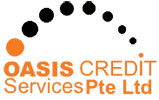When it comes to borrowing money, collateral plays a key role in securing both personal and business loans. Understanding how it works and why it’s important can help borrowers make informed decisions and potentially improve their chances of loan approval. Whether you’re an individual seeking a personal loan or a small business owner looking for a business loan, this guide breaks down the concept of collateral, its uses, and its significance.
What is Collateral?
Collateral refers to any tangible or intangible asset that a borrower pledges to secure a loan. Put, it acts as a form of security for the lender in case the borrower is unable to repay the loan. If a borrower defaults, the lender has the right to seize and sell the collateral to recover their funds.
Common Types of Collateral for Loans
The type of collateral varies depending on the loan type and lender requirements. Some common forms of collateral include:
- Personal Assets:
- Real estate, such as your home or land
- Vehicles, like cars or motorcycles
- Savings accounts or certificates of deposit
- Business Assets:
- Equipment or machinery
- Inventory or stock
- Accounts receivable (outstanding invoices)
- Commercial properties
Choosing the right collateral depends on the loan amount and purpose, as well as the value of the asset you’re providing.
Why Do Lenders Require Collateral?
Collaterals reduce risks for lenders. Banks, credit unions, and other financial institutions typically face a substantial amount of risk when lending money. If a borrower defaults, lenders must recover their losses one way or another, and collaterals ensure there’s something of value to offset the unpaid debt.
The Two Main Reasons Lenders Require Collateral
- Risk Mitigation
Collateral assures that the lender can recover their money in the worst-case scenario. It minimizes losses and strengthens the lender-borrower relationship. - Encouraging Responsibility
Borrowers are less likely to default on a loan secured by a valuable asset because there’s a real potential of losing it in the event of non-payment.
Example
For instance, if you’re applying for a $50,000 business loan and offer a piece of machinery worth $60,000 as collateral, the lender may feel more comfortable approving your request since the value of the asset exceeds the loan amount.
How Does Collateral Work in Personal Loans?
For personal loans, collateral is typically used in secured loans, such as home equity loans or secured car loans. When you offer collateral, lenders assess the value of the asset to ensure it matches or exceeds the loan amount.
Application Process for a Secured Personal Loan
- Valuation of Asset
The lender will evaluate the market value of your collateral to determine if it’s sufficient to cover the loan. For example, a home offered as collateral may require an appraisal. - Loan Approval Terms
Once the asset’s value is verified, the lender will determine the loan terms, including interest rates and repayment periods. Generally, secured personal loans have more favorable interest rates compared to unsecured loans. - Loan Disbursement
After approval, you receive the loan; however, the lender may hold a lien over the collateral until repayment is made.
Potential Risks for Borrowers
While collateral can make it easier to qualify for loans, borrowers must understand the risks. If you default on a secured personal loan, you risk losing the asset you pledged.
How Does Collateral Work in Business Loans?
Collateral is particularly crucial in business loans because commercial lenders often deal with higher loan amounts and extended repayment terms. Small- to medium-sized businesses may use collateral to qualify for loans to finance equipment, expand operations, or manage cash flow.
Using Business Assets
- Equipment Financing
Equipment financing loans often use the machinery itself as collateral. If your business needs new manufacturing equipment, the lender may grant a loan secured by that machinery. - Accounts Receivable Financing
Small businesses with unpaid invoices can use these receivables as collateral for short-term loans. This process, known as invoice financing, can help maintain liquidity while waiting for clients to pay.
Case Study Example
Consider a startup that needs $100,000 to scale its operations. If it owns $150,000 worth of equipment and offers this as collateral, the lender may be inclined to approve the loan. This way, the business secures the loan without having to establish credit beforehand.
Key Benefits of Collateralized Loans
Providing collateral for a loan offers numerous advantages, particularly when compared to unsecured loans.
Lower Interest Rates
Secured loans typically come with lower interest rates because the collateral reduces the lender’s financial risks. A homeowner using their property as collateral, for example, might secure an interest rate significantly lower than with an unsecured personal loan.
Higher Borrowing Limits
With collateral, borrowers can often access larger loan amounts. For instance, a business with substantial physical assets might qualify for a higher credit line than one without.
Easier Loan Approval
Collateralized loans are also easier to get approved, especially for borrowers with limited credit histories. The presence of collateral assures lenders of repayment, increasing the likelihood of approval.
Extended Repayment Terms
Many collateralized loans offer more flexible or extended repayment periods. This can make monthly payments more manageable for borrowers.
Challenges and Risks of Collateral
Possible Loss of Collateral
The primary risk is the potential for losing your pledged asset. This risk makes it essential for borrowers to evaluate their repayment ability before offering collateral.
Risk of Over-Valuation
Sometimes, lenders may overvalue collateral, offering loan amounts that borrowers cannot realistically repay. This situation can lead to financial strain and ultimately result in asset loss.
Legal Implications
If the borrower defaults, the lender may pursue legal avenues to claim the collateral. For personal property, this could mean foreclosure or repossession.
Tips for Borrowers Using Collateral
For both personal and business loans, offering collateral should be a calculated move. Here are a few tips:
- Understand the Asset’s Value
Always have a clear understanding of your asset’s market value. This prevents undervaluation or overextension during negotiations with lenders. - Borrow Only What You Need
Avoid leveraging valuable assets for unnecessary loans. Borrow conservatively to ensure you can meet repayment obligations. - Review Loan Terms Carefully
Pay close attention to the terms and conditions, especially penalties for non-payment and clauses related to collateral seizure. - Consult a Financial Advisor
If you’re unsure about using collateral, an expert can help analyze the potential risks and benefits appropriate for your financial situation.
Final Thoughts
Collateral plays a vital role in facilitating access to loans, whether for personal or business purposes. By offering assets as security, borrowers can unlock favorable loan terms, higher credit limits, and improved chances of approval. However, it’s equally important to understand the risks involved and to pledge collateral responsibly. For individuals and businesses alike, financial planning and careful evaluation of repayment ability are crucial to maximizing the benefits of collateralized loans without compromising valuable assets.

